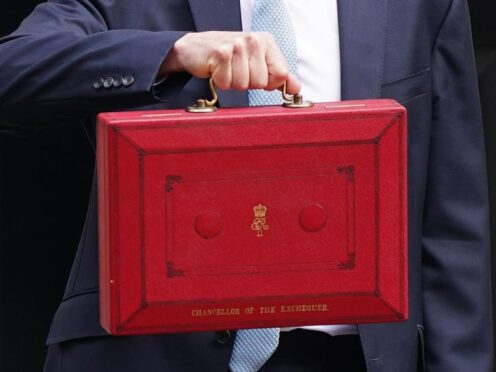
Jeremy Hunt’s Budget has cleared its first Commons hurdle, amid warnings that it lacks a “bombshell” announcement to turn around the Conservatives’ election prospects.
MPs approved a series of Budget resolutions, which relate to specific proposals for taxation, on Tuesday evening and a Finance Bill will be considered at a later date to give them permanent legal effect.
Chancellor Mr Hunt used the Budget to announce pre-election giveaways, including a 2p cut in national insurance for employees and the self-employed from April and a cut to the top rate of capital gains tax on property sales.
Labour questioned whether the Conservatives were delivering “confusion, delusion or denial”, suggesting a general election is required.

Conservative MP Richard Drax said the party needed “crystal clear blue water” from Labour, adding Mr Hunt had pursued a “very cautious” approach.
Speaking on the final day of the Budget debate, the MP for South Dorset said: “When I heard the Chancellor speak about the importance of lower taxes and allowing people to keep more of their hard-earned money I was expecting a bombshell of an announcement during his speech.
“For example, abolishing inheritance tax, lowering income tax – which I would’ve personally chosen myself, not national insurance – lowering corporation tax to encourage growth, simplifying the tax system, less state, less regulation, reforming business rates, curbing many of these bloated quangos if not scrapping them altogether, and returning control to elected ministers.
“With our party staring down the barrel of a gun it was time to be bold and courageous.”
Mr Drax said he accepted Mr Hunt is “dealing with unprecedented times” before adding: “We’re pursuing the socialist way – punish those who earn more by working hard for their families, all to pay for a bigger state that is both unaffordable and which runs contrary to every single Conservative value.”
Backbench Tories from tourism-reliant coastal areas also urged caution from ministers when implementing Mr Hunt’s plans to end tax breaks for holiday homes.
Shadow Treasury minister Darren Jones earlier insisted Labour is “not sticking to Conservative spending plans”, amid fears of post-election cuts.
He made the remark after it was put to him that the independent Institute for Fiscal Studies (IFS) has accused the two main parties of a “conspiracy of silence” about public spending after the election.
SNP MP Alan Brown (Kilmarnock and Loudoun), intervening, said: “In terms of denial, the Budget bakes in future post-election cuts of £19 billion to £20 billion and the IFS has said there’s actually a ‘conspiracy of silence’ from both the Conservatives and the Labour Party.
“The Labour Party has committed to sticking with Tory spending plans. In terms of the conspiracy of silence, is Labour going to keep the £20 billion of departmental cuts or going to raise funds to offset that?”
Mr Jones replied: “Two short answers. Firstly, we’re not sticking to Conservative spending plans and, secondly, the OBR (Office for Budget Responsibility) forecasts Conservative Party failure, not the success that the Labour Party will bring to this country and the economy.”
Treasury minister Bim Afolami, closing the fourth and final day of debate in a rowdy chamber, said real terms spending on public services is expected to increase “every year of the next forecast by 1% in addition to inflation”.
As he mocked Labour’s approach, he said of former party leader Jeremy Corbyn: “It might surprise you to learn that I actually admire the Member for Islington North – he believes in things, he has ideas, unlike the shadow Treasury team opposite who do not even have the semblance of a coherent plan or any beliefs at all.”
He questioned if shadow chancellor Rachel Reeves was on her “smoke salmon offensive” in the City of London, adding she was too busy “pretending to love bankers to have time to think of any new ideas”.
His Treasury frontbench colleague Laura Trott earlier said the UK economy is “turning a corner” before claiming Labour wanted to introduce “more taxes for hard-working families”.

The Budget debate also saw Lee Anderson take a seat on the opposition benches next to George Galloway during his first Commons appearance since joining Reform UK.
Mr Anderson, the MP for Ashfield in Nottinghamshire who is a former Conservative Party deputy chairman, sat on the back row of the opposition benches next to Mr Galloway, the new Workers Party of Britain MP for Rochdale.
Mr Galloway used his first speech since returning to the Commons to hit out at both Labour and the Conservatives.
He said: “Frankly all the spices in Rochdale could not give flavour to what can only be described as a nothing burger of a Budget. An absolute nothing burger and the response from the so-called Opposition in this House: equally vacuous.”

Enjoy the convenience of having The Sunday Post delivered as a digital ePaper straight to your smartphone, tablet or computer.
Subscribe for only £5.49 a month and enjoy all the benefits of the printed paper as a digital replica.
Subscribe